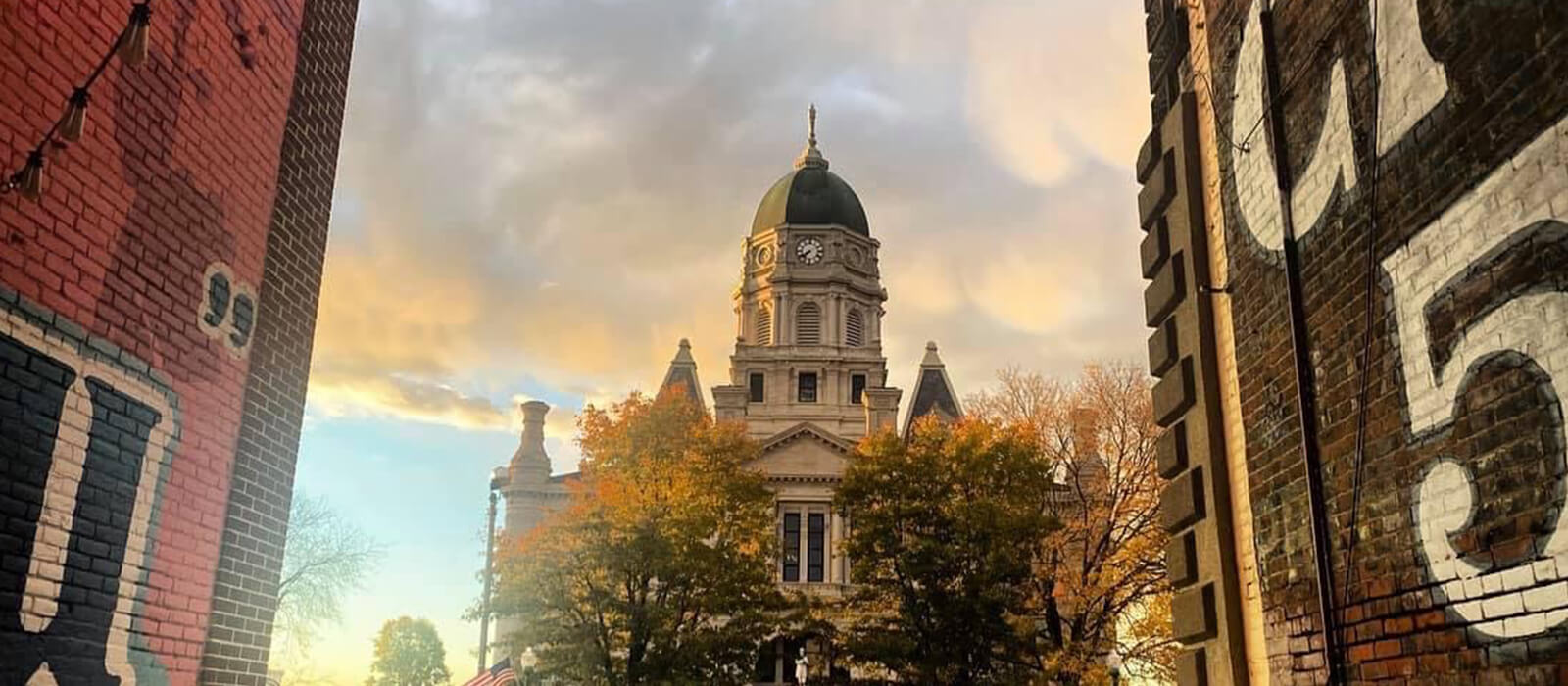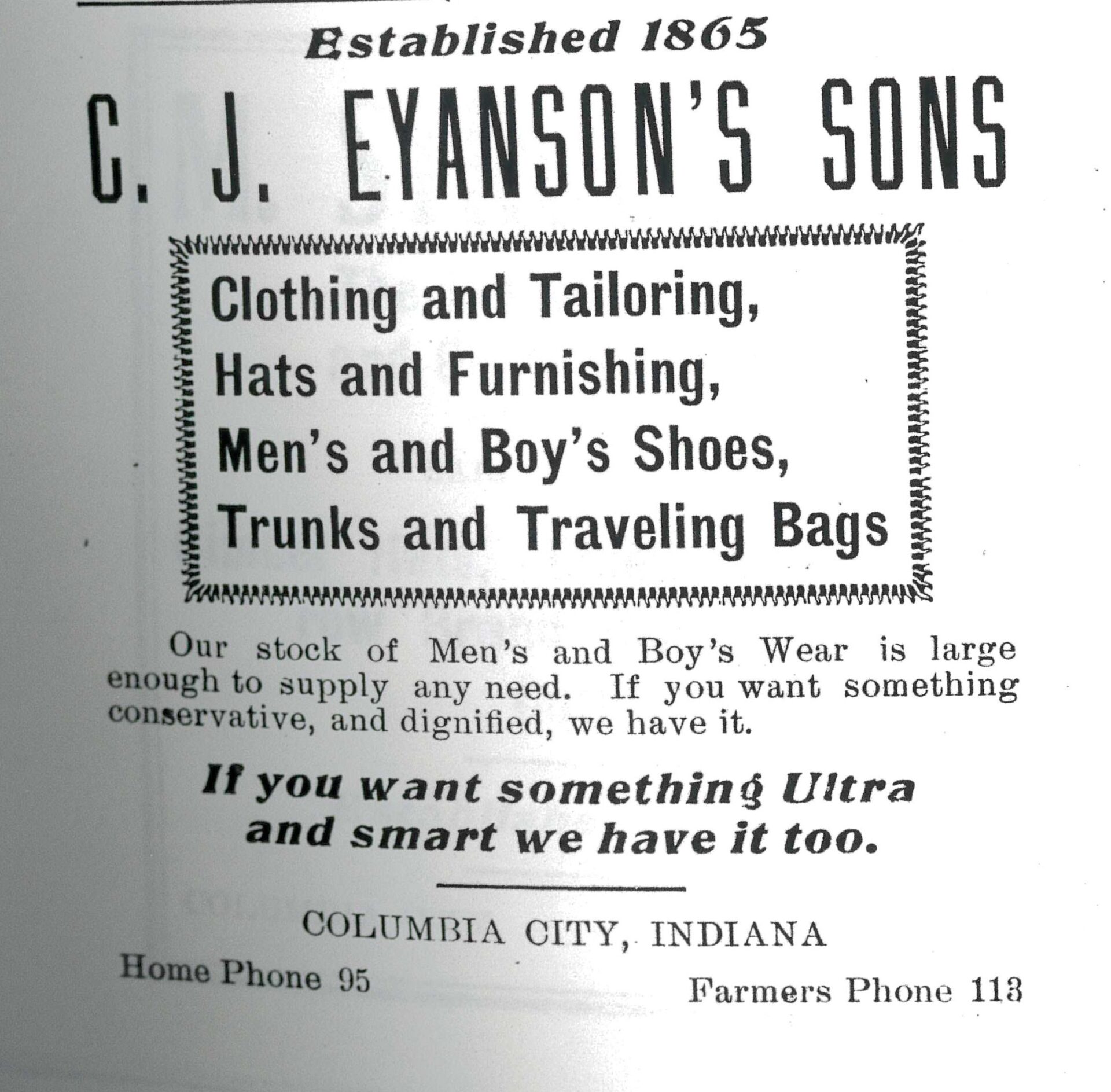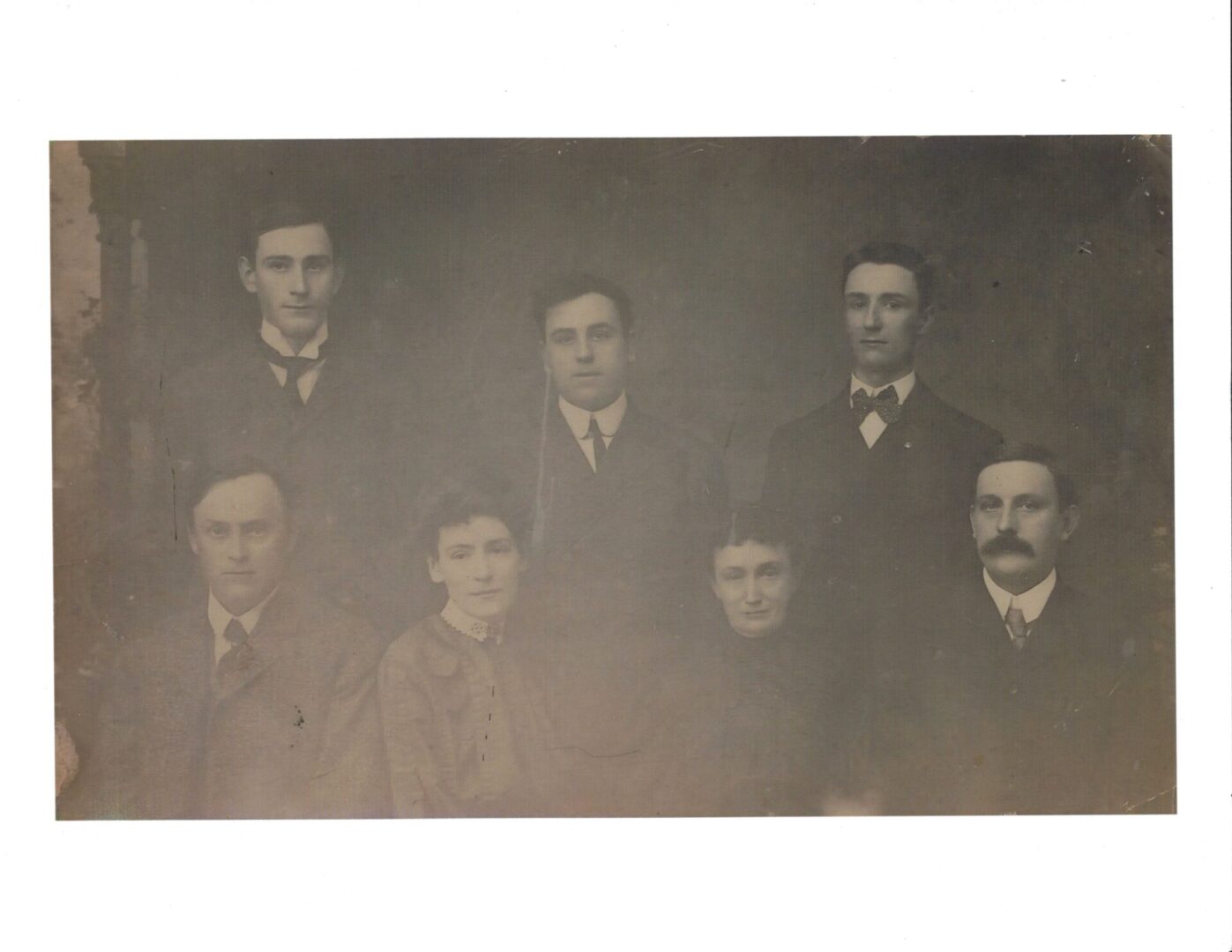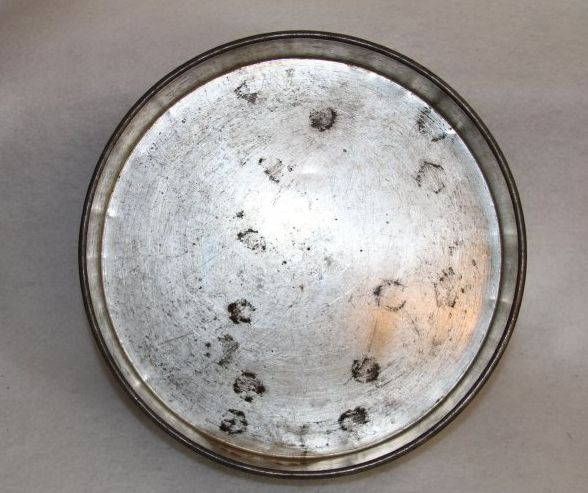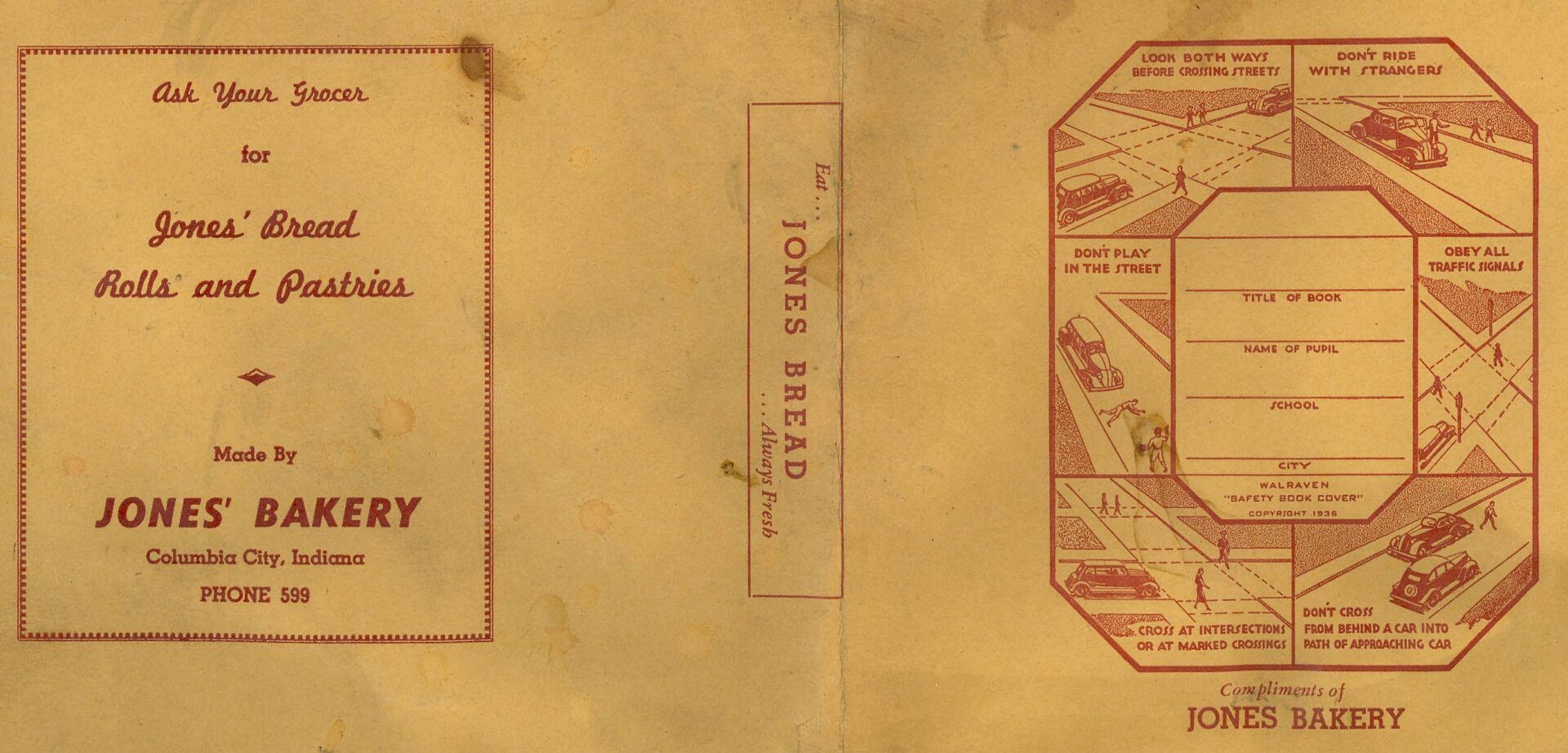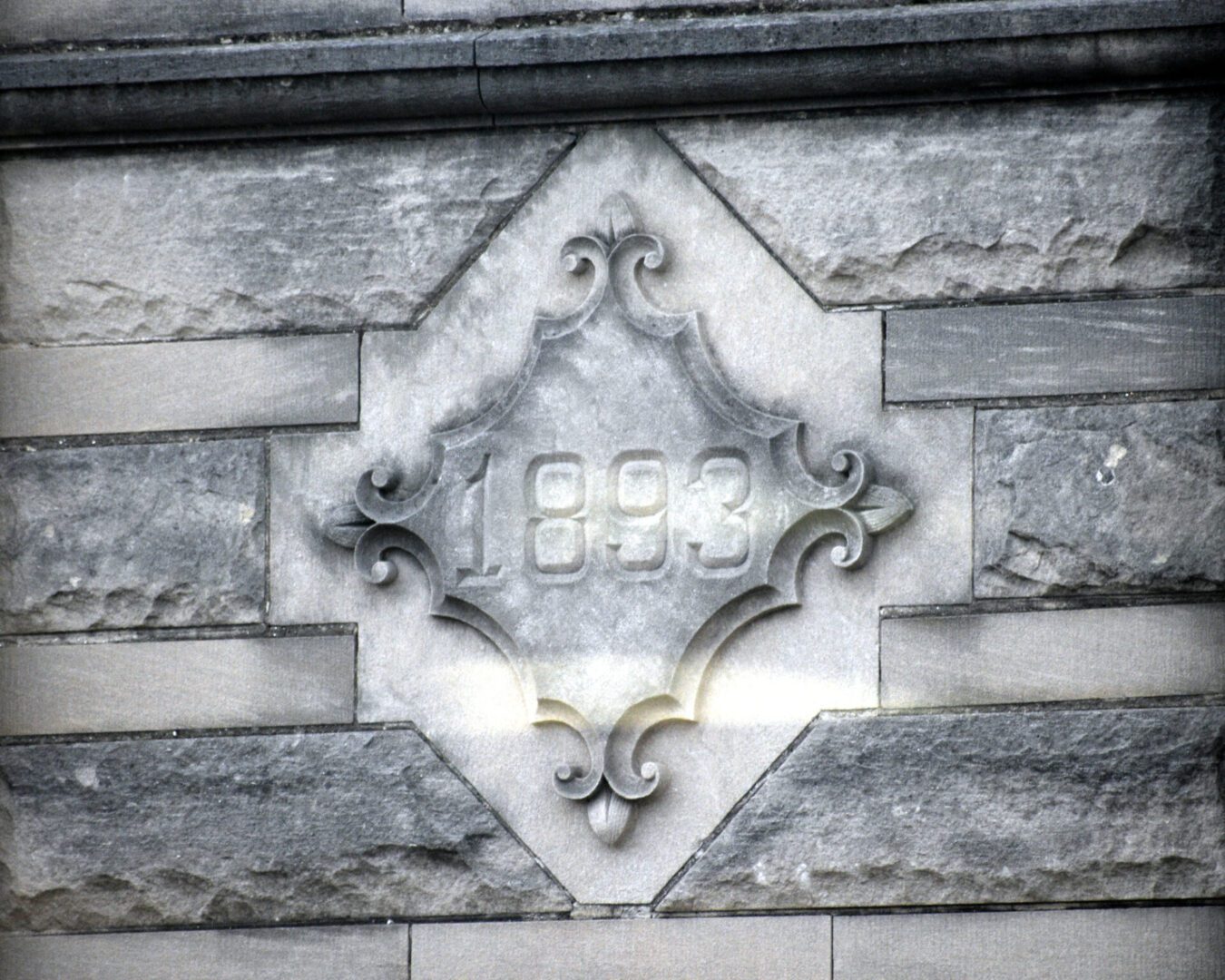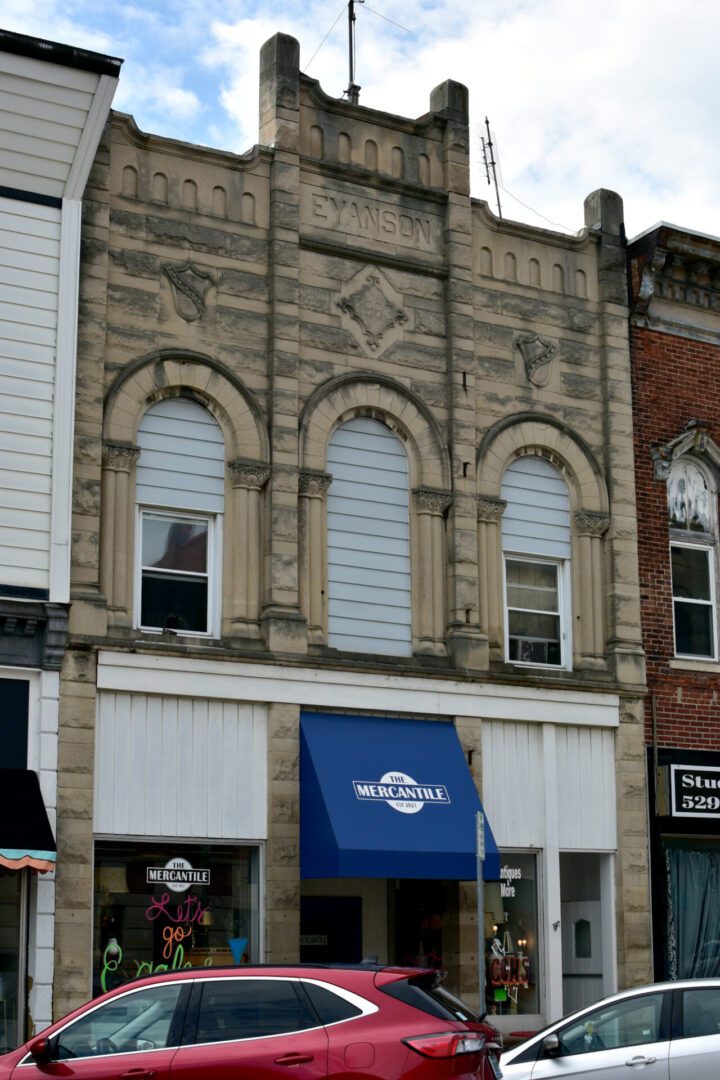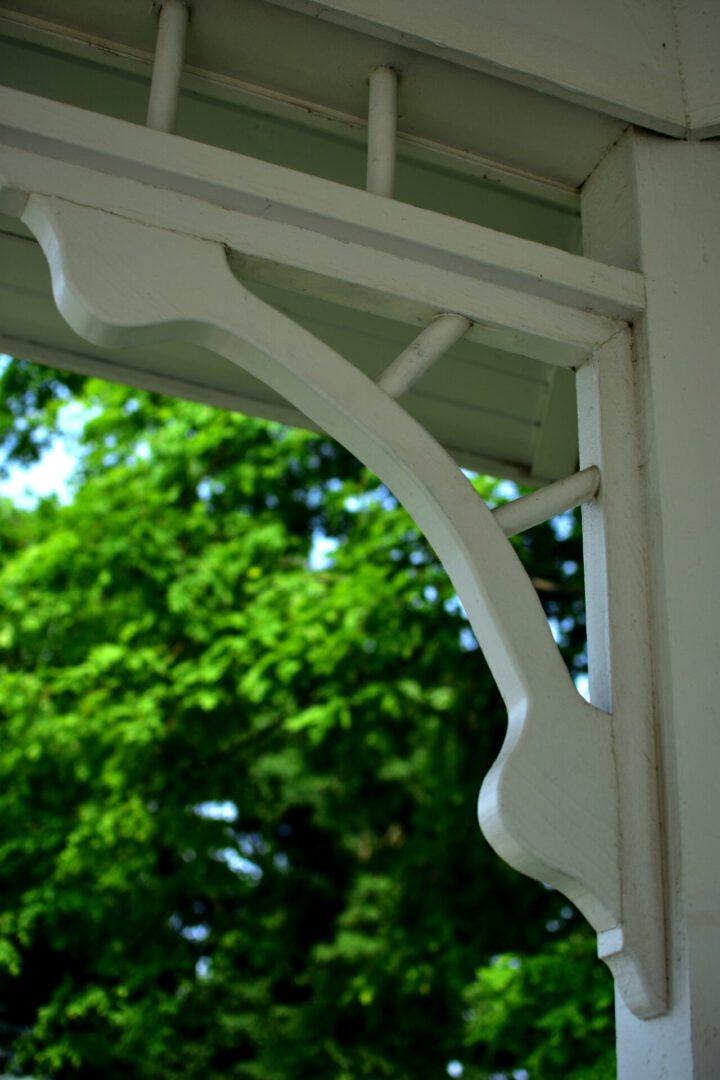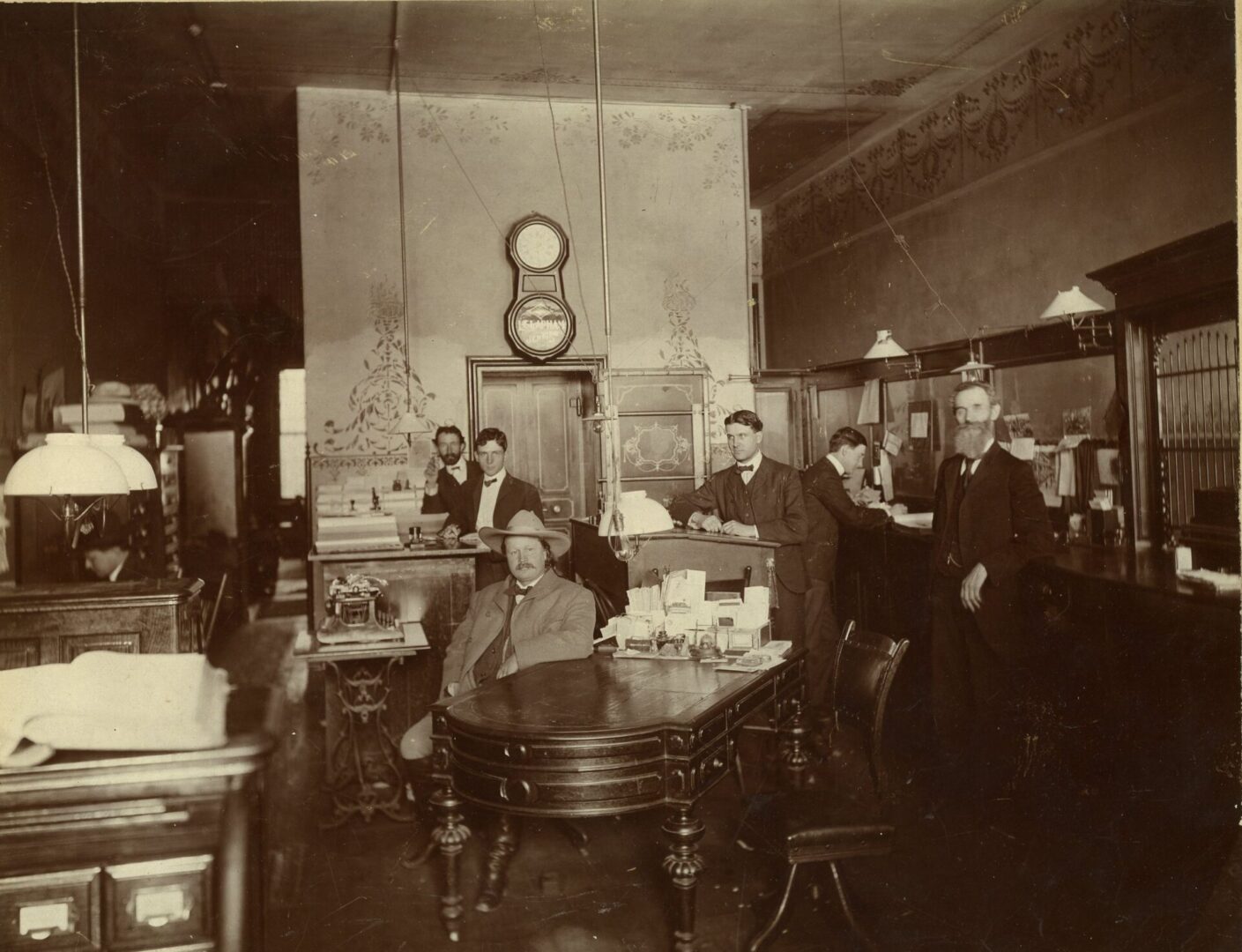The History that Made Us
This structure at 219 West Van Buren Street is inspired by the Romanesque style of the turn of the century. It took design elements from Roman architecture and one of its most characteristic features are the semi-circular arches.
At the top of the building is the name Eyanson, in recognition of Charles J. Eyanson whose efforts built this building in 1893. He was a prominent businessman of the time, having owned the Provident Trust Co. building, farms and lots as well as several residential properties. In this building, he operated a tailoring business and clothing store.
Charles Eyanson was born September 20, 1839 in Ripley County, Indiana. Soon after this his parents moved the family to Philadelphia, and it was there Eyanson received his education. His first business was in the dry goods trade before learning to be a tailor.
In his early career Eyanson traveled through the south establishing local agencies for a sewing company. By 1860 he had entered into the tailoring business with his brother Thomas E., the original of which was located in Huntington. Charles continued this business alone in 1862 when he moved operations to Roanoke. Just three years later the business had been reorganized once again to be named Eyanson Bros. when it was moved to Columbia City and expanded. Charles and Thomas added to their business the manufacturing of woolen goods and operated the woolen mills. This partnership was finally dissolved in 1874, but Charles continued the business alone.
He first operated in this city in the corner room of the Rhodes building before constructing his own building at this spot in downtown Columbia City.
In his personal life, he married Magdelene Zimmerman, originally from Baden Germany, in 1866. Eyanson was himself of Irish descent and a devout Catholic. Eyanson was also township trustee and was elected treasurer of the town. He and his wife had six children – Charles J. (Jr.), Stephen T., Walburga M., Frank E., Lewis C. and John N.
Eyanson continued to run his business until his death January 1903. Eyanson’s Sons, a clothing and shoe store, continued operation in this building thanks to his son Charles Jr. well into the 1900s and beyond.
The building was purchased by Kenneth P. “Tom” Jones in 1926. Previously he and his wife Bertha E. (Nei) operated the South Whitley Bakery before moving to Columbia City. Jones was a native of Smith Township, born May 30, 1901, and he learned his trade through Shealy Bakery in Churubusco. When Jones first opened his Columbia City location he worked in partnership with Albert Walter. Jones purchased Walter’s interest in 1929 and continued to operate the bakery until 1947 when his son Dwight Jones joined him. Among the products that were sold were bread, cakes, pies and pastries.
K.P. Jones passed away in 1965, but the bakery continued for a few years until a closure was announced in 1969. Keith Sidel and Hunter Zeigler, who were previous bakery owners and workers in Ohio and Fort Wayne, purchased the building and started their own bakery using equipment purchased from the Jones family.
Other businesses followed before it became the home of Odyssey Travel for a number of years. Now operating out of this historic structure of Columbia City is The Mercantile.
Thank you to the Whitley County Historical Museum for sharing photos from their collection and for their outstanding research and writing of the article.
Where are We: Architectural History
This downtown building’s year of construction is memorialized on this unique stone cartouche. This, combined with the rest of the building’s architecture, sets it apart from most of Columbia City’s historic buildings. The unique “1893” date cartouche stone can be found above the middle arch of the Eyanson Building at 219 West Van Buren Street.
This building is an example of Romanesque Revival architecture popular in the last quarter of the 19th-Century. The circular window arches, rusticated (rough cut appearance) stone with contrasting bands of cut stone, and Corinthian columns are all typical of this style. However, the castle-style parapet along the top of the façade is a bit unusual for the Romanesque Revival style, but the arch detailing does complement the main window arches nicely.
Also unique are the shield decorations flanking the date stone. Charles Eyanson, whose last name is etched across the top, must have wanted to be distinctive when constructing his clothing store in 1893.
Thank you to Nathan Bilger for providing the recent photos and valuable insights into the architectural history.
